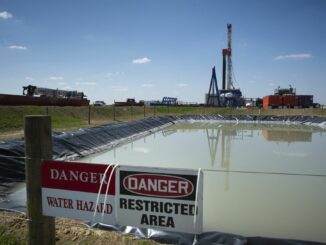
Ohio, Pennsylvania and West Virginia combined form the third-largest natural-gas-producing region in the entire world behind only the remainder of the United States and Russia.
But instead of embracing this good fortune and maximizing its potential to provide cleaner, affordable and abundant energy and goods related to its production, our leaders at the federal level continue to work overtime to curtail and eliminate the oil and gas industry in the United States. As a result, America is left weaker and more vulnerable compared to our competitors and adversaries around the world.
Domestically produced natural gas is a gaseous mixture of hydrocarbons predominantly consisting of methane. The largest sources of methane emissions in the world are natural wetlands and agriculture, followed by the production of coal, oil and then natural gas. Wetlands and agriculture each emit more than three times the amount of methane than does the production of natural gas. Compared to others listed, the oil and gas industry has worked hard to reduce methane emissions in order to combat any potential adverse impacts of emissions.
According to U.S. EPA and its Greenhouse Gas Reporting Program, all of the United States’ major producing basins, including the Appalachian Basin where Ohio sits, reduced its total methane emissions volumes between 2018 and 2022. Just the Appalachian Basin alone saw a 37% decrease in methane emissions. These significant decreases occurred even with record production over the past few years.
The industry will continue to reduce methane emissions as new technology and innovations are applied to the production and transportation of natural gas. Reduction in carbon emissions across the United States and especially in Ohio exist because of natural gas. Due to changes in electricity generation, older coal-fired generation plants with large carbon footprints have been replaced with cleaner-burning, more-efficient, natural gas power plants.
These plants have contributed to the majority of carbon emissions reductions in the electricity sector since at least 2006. Natural gas continues to be the most important and effective tool to reduce carbon emissions in Ohio and across the country. While foreign countries continue to build coal-fired power plants and produce fossil fuels with nearly zero environmental accountability, Ohio, Appalachia and the rest of the United States continue to lead in production, emissions reductions and innovative environmental practices.
Unfortunately, this progress remains under attack. The Biden administration continues to attack the industry while doing nothing to combat the largest contributors to methane emissions. Instead, the administration throws up roadblocks against the only industry actively working to reduce methane and carbon emissions — not to mention the most affordable and reliable energy source for our most vulnerable citizens
Ohio residents are fortunate and blessed to have so much oil and natural gas under their feet. Let’s not waste this opportunity to ensure our energy future. Domestic energy is the building block of a modern society and ensures national security in an ever-threatening world.
Let’s be smart with our oil and gas policy and focus on the innovations of the industry instead of actively working against our best opportunity to provide consistent, dependable energy in a cost-effective manner that works to reduce all emissions to protect the environment.
Rob Brundrett is president of the Ohio Oil and Gas Association, whose mission is to protect, promote, foster and advance the common interest of those engaged in all aspects of the Ohio crude oil and natural gas producing industry.



